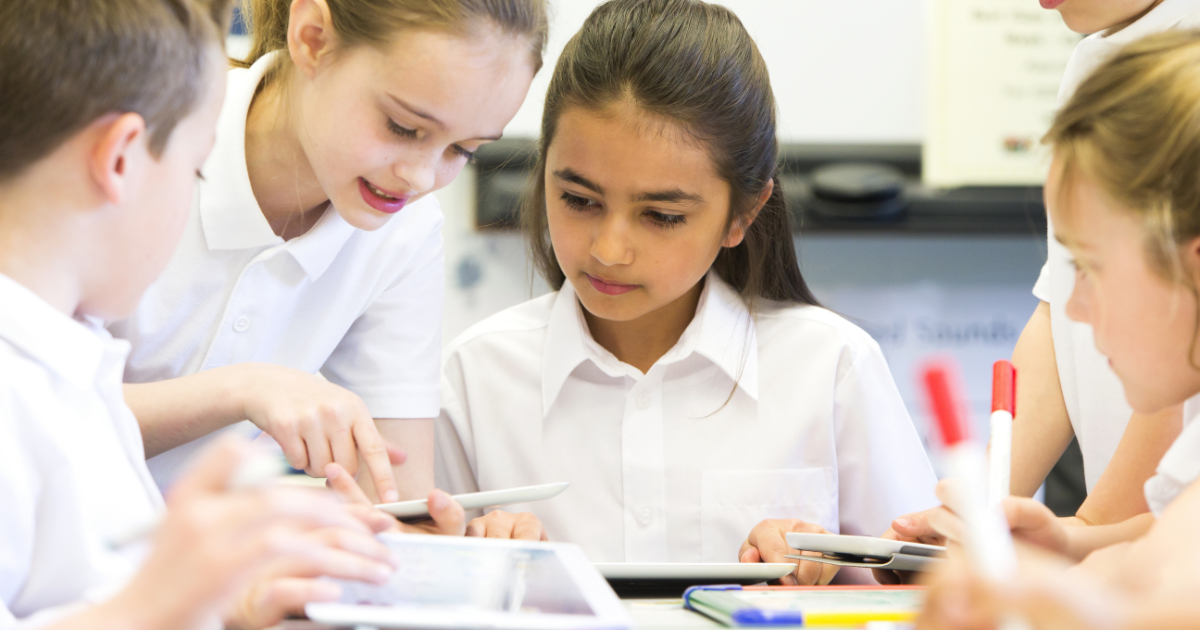Noisy. Bickering. Off-task.
If you've ever taught a class like this, you'll know it feels:
- Exhausting
- Demoralising
- Like you're wading through treacle
Unfortunately, improving whole class behaviour is often about winning in the long-term.
We focus on things like consistency and relationships. Although worthy, these all take time before you get results.
But there is a way to get a quick, easy win with whole class behaviour... and it's often overlooked.
I'm about to give you three steps you can implement in less than 30 minutes and will work in any classroom.
Plus, they're easy to follow and you don't need any experience to see the benefit.
Interested?
Okay then, let's dive in.
The most overlooked item in your behaviour toolkit is... your seating plan
The way you layout your furniture has a remarkable impact on the behaviour of the whole class.
Yet often, we don't give it a second thought. We arrange the tables and chairs in a certain way because...
...well, that's how we've always done it.
But different classes have different needs. What worked for last year's class won't necessarily work for this one.
And sometimes the social dynamics of a class change over time. So what worked at the start of the year has stopped being effective.
Fact: changing the room layout has an immediate impact on how children behave, work and interact.
So wait until your classroom is empty, stand back and work through these 3 key steps.
Step 1: reorganise where everyone sits
We're going to shuffle everyone around.
This always improves the behaviour of a class, as it takes children time to settle into their new social groups and find their role in the new hierarchy.
When we do this, we're going to take great care where we sit children who present challenging behaviour.
Here's the thing:
Children with social, emotional and behavioural difficulties often have learning needs as well. (Before you hit 'send' on that email, I know this isn't always the case.)
And because we tend to group children by ability, these children often end up sitting on the same table.
Unfortunately, this can result in them:
- clashing with each other
- encouraging each other to engage in disruptive behaviour
- show-boating
Now, I don't believe there's such a thing as bad children...
...but I do believe in bad combinations of children.
Think about the Sankara stones in Indiana Jones and the Temple of Doom.
By themselves, they don't present much of a problem. But when you bring them together... you multiply their powers and things get really, really bad.
Sitting children with behaviour needs together is usually a recipe for failure. So let's not make that mistake.
That makes step one in our process shuffling where your students sit, and distributing children with behaviour needs across the class.
(And whilst you're doing that, separate any students that consistently fall out with each other. If their relationship has a track record of not working, give them some time apart... they'll probably thank you. Then help them repair their friendship before bringing them back together.)
Step 2: Ensure line of sight
Line of sign is the hidden driver of poor classroom behaviour - especially towards the end of the day.
By line of sight, I mean: can the student see the board without having to turn around in their chair?
Take the picture below.
In this diagram, the students in red have to physically turn 180 degrees every time:
- the teacher addresses the whole class
- to read something from the board
Imagine being one of those children, sitting in a chair where the information you need is always physically behind you.
Little by little, that act of turning back and forth would wear away at your attention levels.
After 3 or 4 hours, you'd feel... what?
Drained? Irritated?
What would it do for your ability to stay on task if you had a diagnosis ADHD or sensory needs?
So step two is to audit your table layout for line of sight. Make sure that every single child has a line of sight to the board.
(Sometimes this isn't possible because of the physical space - but make this goal your ideal.)
Following this approach also helps you maintain eye contact with every pupil in class - this article explains why it's so important.
Step 3: maximise personal space
Every pupil / adult / human being needs space to work.
When we squeeze too many children around a table, we're creating fertile ground for arguments and off-task behaviour.
Tables are designed to accommodate a specific number of students. Make it a rule not to exceed that number.
If you overcrowd tables, your students will end up:
- with their books overlapping (frustrating!)
- with no personal space (annoying!)
- losing / accidentally taking each others resources (exasperating!)
If any of these problems apply, fix them now. That may mean sacrificing extra space in another part of the classroom to bring in more tables.
Now let's look at the space between the tables.
Ask yourself:
- is there enough space between the tables?
- can every student pull out their chair without bumping into the pupil behind them?
- can students walk between the tables without bumping other seated pupils?
Get this wrong and the physical layout will grind down your students' patience as the day wears on. It'll lead to frayed tempers, frustration and poor concentration.
Eliminate these problems and you'll see an instant boost in whole class behaviour.
Takeaways
How we organise our furniture plays a key role in determining whole class behaviour... but it's often a factor we overlook.
Also, when whole class behaviour becomes an issue, changing the physical layout sends a signal to your class that you're having a fresh start - and brings an instant impact for relatively little effort.
What's not to love?
So here's your three-step plan to making sure your classroom layout is working for you... rather than against you.
- Step 1: shuffle around where everyone sits, seating children with behaviour needs away from each other
- Step 2: check that every single child in the classroom has a line of sight to the board.
- Step 3: check the physical layout of your furniture, so students aren't invading each other's personal space.
Refresh the physical environment of your classroom and see the benefit today!

